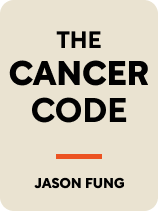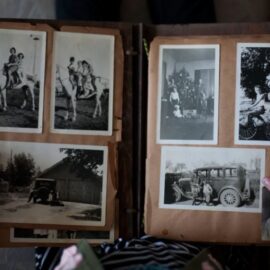

This article is an excerpt from the Shortform book guide to "The Cancer Code" by Jason Fung. Shortform has the world's best summaries and analyses of books you should be reading.
Like this article? Sign up for a free trial here.
Is cancer a random event? What is the problem with the idea that cancer is a random occurrence?
According to Dr. Jason Fung, cancer can’t possibly be the result of a random mutation. If cancers could be assigned to random specific mutations, treatments targeting those mutations would be effective, but that’s rarely the case.
Here’s why cancer is not a random event, according to Dr. Fung.
Cancer Is Not a Random Event
Despite scientists mapping hundreds of cancer genomes, finding countless cancer-related mutations, and promising personalized treatment that targeted each patient’s specific form of cancer, a 2018 study found that less than five percent of cancer patients benefited from treatments targeting specific mutations. In other words, decades of research and billions of dollars in funding had failed to produce results.
In addition to failing as a basis for treatment, the mutation theory of cancer also fails as an explanation of cancer. It can’t explain why cancer is so common, or why there are so many different types of cancer that all share the same characteristics.
So, is cancer random? Well, the odds of numerous specific mutations—uncontrolled growth, hiding from the immune system, leeching the body’s nutrients, and so on—all arising in a single cell are incredibly low. Therefore, random chance can’t explain why cancer is so prevalent among modern-day humans.
Cancer Is an Evolving Organism
If cancer doesn’t spring at random, what causes it? Rather than the concept of random mutations causing cells to run wild, Fung says that cancer’s behavior is actually extremely logical and focused on survival; not the survival of the host, but of the cancerous “organism.”
Fung says that the model of cancer as an evolving species solves the two major shortcomings of the somatic mutation theory. First, cancer does not spring up at random—the elements of cancer are already present in our DNA, so all the cell needs to become malignant is for those genes to reactivate. This provides a much more satisfactory answer to cancer’s prevalence than random chance could.
Second, this model reveals that genetically-targeted treatments are mostly ineffective because of cancer’s genetic variation. After turning cancerous, cells continue to divide and mutate extremely quickly, meaning that even cancerous cells within a single patient can have countless different genetic traits. So, while a targeted treatment will kill many of the malignant cells, it’s very likely that some will be resistant to it. Even worse, those surviving cells will continue to reproduce, meaning that cancer can evolve to resist any given treatment.
Therefore, to cure a patient and avoid relapse, doctors must either find and target the root mutation—the original genetic change that all the cancer cells share—or use a battery of different treatments to ensure that every malignant cell is destroyed.
In other words, malignant cells didn’t need to evolve cancerous traits from scratch, because the genes for the traits were already in their DNA. The cells just needed to evolve (or devolve) in such a way that those genes reactivated.
| A New Model, or Corrections to An Old One? While Fung presents Model 3 as a revolutionary new understanding of cancer, we could also see it as simply an updated version of Model 2. To illustrate this point, Thomas Kuhn’s The Structure of Scientific Revolutions says that there are two ways science progresses: Method one: puzzle-solving. This is part of what Kuhn refers to as “normal science,” where scientists steadily build upon our existing knowledge. They may find the need to make minor corrections, but it isn’t necessary to completely overturn our current understanding of the topic. Method two: revolution. This happens when scientists find something that the current model can’t explain, and a minor correction isn’t sufficient. For example, when astronomers found that the Earth-centric theory of the solar system couldn’t predict the movements of stars and planets—no matter how much they tweaked the theory and played with the numbers—it eventually became clear that the opposing Sun-centric theory was more accurate. In this case, Fung presents the Atavistic Theory of cancer as a revolution, overthrowing the established Somatic Mutation Theory. In reality, the Somatic Mutation Theory wasn’t wrong, just incomplete; cancer is the result of mutations, but those mutations are less random and less extreme than scientists previously thought. That solves the puzzles of why cancer is so common and why different forms of cancer have such strong similarities. |

———End of Preview———
Like what you just read? Read the rest of the world's best book summary and analysis of Jason Fung's "The Cancer Code" at Shortform.
Here's what you'll find in our full The Cancer Code summary:
- A guide on what cancer is and how it works
- A deep dive into the three different models of cancer
- Why there is hope for the future of cancer treatments






